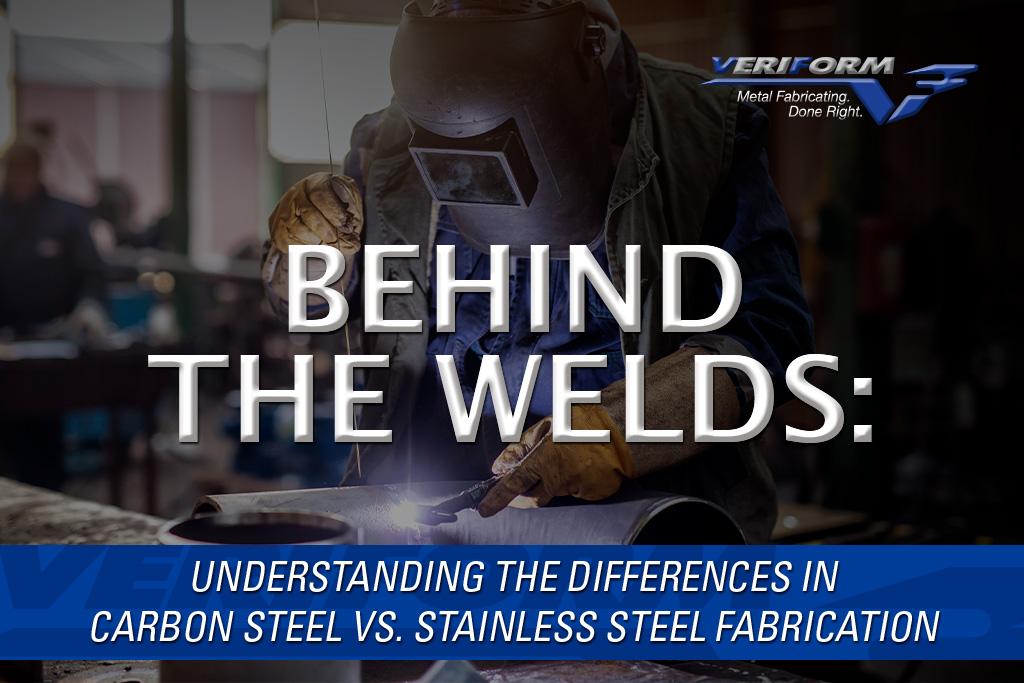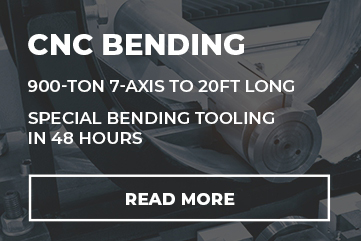News
Behind the Welds: Understanding the Differences in Carbon Steel vs Stainless Steel Fabrication

In the world of metal fabrication, the choice between carbon steel and stainless steel is a critical decision that can significantly impact the performance, durability, and suitability of the final product. These two materials, while sharing some similarities, exhibit distinct characteristics that make them better suited for different applications and fabrication processes. Understanding the nuances of carbon steel vs stainless steel is essential for engineers, fabricators, and end-users alike.
Unlocking the Composition Mystery
At the core of the differences between carbon steel and stainless steel lies their chemical composition. Carbon steel is an alloy primarily composed of iron and carbon, with the carbon content typically ranging from 0.12% to 2.1%. This relatively simple composition contributes to carbon steel’s strength, hardness, and cost-effectiveness, making it a popular choice for various industrial and construction applications.
On the other hand, stainless steel is an alloy that contains chromium at a minimum of 10.5%, along with other alloying elements like nickel, molybdenum, and manganese. The presence of chromium is what gives stainless steel its remarkable corrosion resistance, as it forms a passive oxide layer that prevents rusting and deterioration.
Fabrication Considerations
The distinct properties of carbon steel and stainless steel also influence their fabrication processes and techniques. Carbon steel, with its relatively low cost and high tensile strength, is widely used in welding applications. However, careful surface preparation and protective measures are required to prevent oxidation and rust formation during the welding process.
Stainless steel, on the other hand, poses its own set of challenges during fabrication. While it is inherently corrosion-resistant, the chromium content can lead to the formation of chromium oxides during welding, which can compromise the material’s corrosion-resistant properties. Specialized welding techniques, such as purging with inert gases, are often employed to mitigate this issue and ensure the integrity of the stainless steel fabrication.
High Carbon Steel: A Specialized Variant
Within the realm of carbon steel, a specialized variant known as high carbon steel exists. As the name implies, this type of steel contains a higher percentage of carbon, typically ranging from 0.6% to 1.5%. High carbon steel exhibits exceptional hardness, wear resistance, and tensile strength, making it an ideal choice for applications that require durability and resistance to abrasion, such as cutting tools, knives, and certain machine components.
However, the increased carbon content also makes high carbon steel more susceptible to brittleness and reduced weldability. Proper heat treatment and specialized welding techniques are often required to mitigate these challenges and ensure the successful fabrication of high carbon steel products.
Corrosion Resistance and Environmental Considerations
One of the most significant advantages of stainless steel over carbon steel is its superior corrosion resistance. The chromium content in stainless steel forms a passive oxide layer that protects the material from rust, corrosion, and environmental degradation. It makes stainless steel an ideal choice for applications involving exposure to harsh environments, chemicals, or moisture, such as in the food and beverage industry, marine environments, and certain chemical processing facilities.
In contrast, carbon steel is more susceptible to corrosion and rust, especially in damp or corrosive environments. While protective coatings and surface treatments can enhance the corrosion resistance of carbon steel, these measures often require additional maintenance and may have a limited lifespan.
Stainless vs Carbon Steel: Applications and Cost Considerations
The choice between stainless steel and carbon steel often comes down to the specific application requirements and cost considerations. Carbon steel is generally more affordable and widely available, making it a popular choice for structural applications, construction, and general-purpose fabrication where corrosion resistance is not a primary concern.
Stainless steel is more expensive due to its alloying elements and specialized manufacturing processes. However, its exceptional corrosion resistance, durability, and aesthetic appeal make it the preferred choice for applications in industries such as food and beverage, pharmaceuticals, healthcare, and architectural finishes, where hygiene, longevity, and appearance are crucial.
Conclusion
In the realm of metal fabrication, the choice between carbon steel and stainless steel is a pivotal decision that requires a deep understanding of their distinct properties, fabrication considerations, and application requirements. While carbon steel offers affordability and strength, stainless steel excels in corrosion resistance and durability. Ultimately, the selection should be driven by the specific demands of the project, factoring in environmental conditions, cost constraints, and long-term performance goals. By comprehending the nuances of these two materials, engineers and fabricators can make informed decisions that ensure the successful execution of projects across diverse industries.
FAQs
Can carbon steel be made corrosion-resistant through coatings or treatments?
Yes, carbon steel can be made more corrosion-resistant through various coatings and surface treatments. Galvanizing, which involves applying a protective zinc coating, is a common method to enhance the corrosion resistance of carbon steel. Other options include powder coating, painting, and the application of specialized coatings like epoxy or polyurethane. However, these treatments often require regular maintenance and may have a limited lifespan compared to the inherent corrosion resistance of stainless steel.
Is it possible to weld stainless steel to carbon steel?
Yes, it is possible to weld stainless steel to carbon steel, but it requires specialized welding techniques and filler materials. The dissimilar materials can create galvanic corrosion issues, which must be addressed through proper joint design, filler metal selection, and post-weld heat treatment. Additionally, care must be taken to ensure that the weld does not compromise the corrosion resistance of the stainless steel component.
How does the cost of carbon steel compare to that of stainless steel?
Carbon steel is generally more affordable than stainless steel due to its simpler composition and lower production costs. The price difference can vary depending on factors such as the specific grade of steel, market conditions, and local availability. However, the higher initial cost of stainless steel is often offset by its superior corrosion resistance, durability, and lower maintenance requirements over the long term.
Are there any environmental concerns associated with carbon steel or stainless steel production?
Both carbon steel and stainless steel production processes have potential environmental impacts. Carbon steel production can contribute to greenhouse gas emissions and air pollution due to the use of coal and coke in the steelmaking process. Stainless steel production, while more energy-intensive, generally has a lower carbon footprint but may involve the mining and processing of alloying elements like chromium and nickel, which can have environmental consequences if not properly managed.








